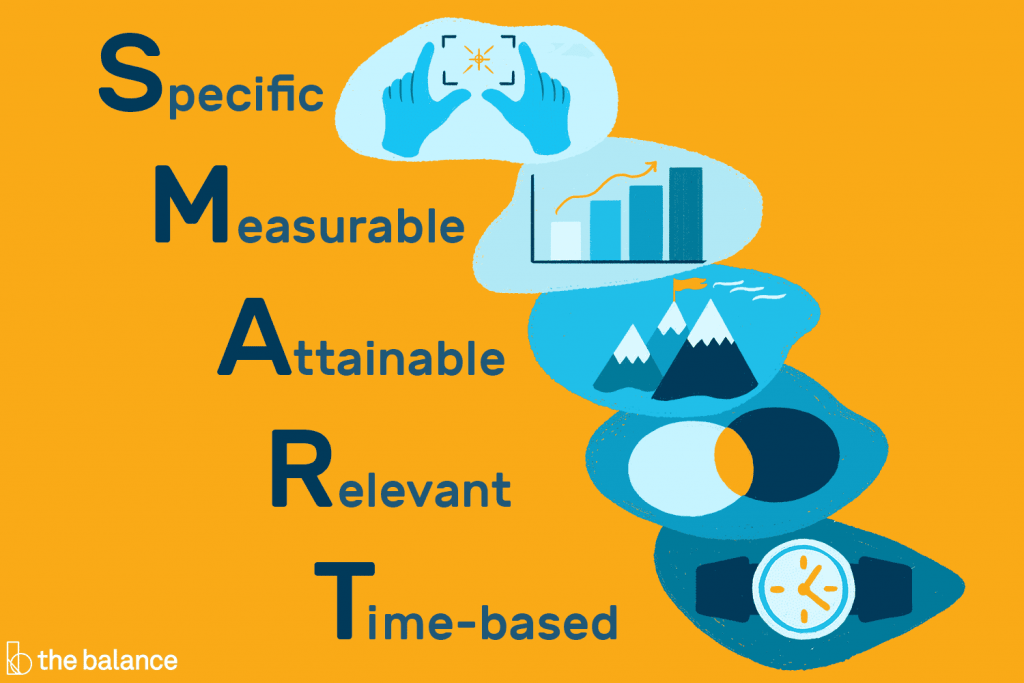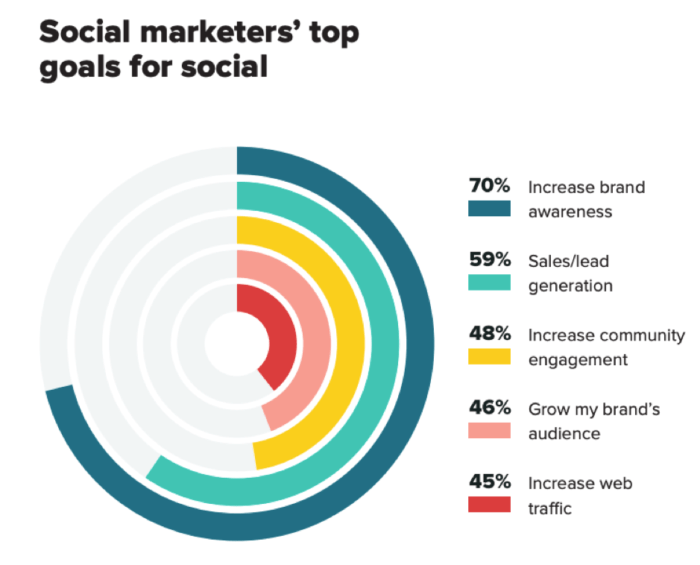Are you looking to polish up your social media marketing strategy in 2023?
Awesome! There’s never been a more opportune time to do this.
Creating a social media strategy can seem overwhelming, but we’ve got you covered with six easy steps. From defining your target audience to measuring your success, we’ll guide you through everything you need to know. So sit back, relax, and get ready to become a social media superstar!
This extensive guide will help you create your social media strategy from scratch and help your brand tackle its goals.
Table of content:
- Set goals for your brand
- Research your target audience
- Discuss the most important metrics
- Create engaging content
- Create a social media posting calendar
- Assess what’s working and double down on it
1. Set goals for your brand
Setting clear and measurable goals is the foundation of a successful social media strategy. Without goals, you won’t know what you’re working towards, and it will be difficult to determine whether your efforts are paying off.
How should you set goals?
Each of your goals should follow the S.M.A.R.T. goal framework:
- Specific
Define your goals as clearly as possible. For example, rather than setting a vague goal of “increasing brand awareness”, get there by setting a specific goal like “gaining 10,000 new followers on Instagram by the end of the year.” - Measurable
Goals should be quantifiable, so you can track progress and measure success. Use metrics like engagement rates, click-through rates, and conversions to measure the impact of your social media efforts. - Attainable
While it’s important to set ambitious goals, they should also be achievable within a reasonable timeframe and with the resources available to you. - Relevant
Goals should align with your overall business objectives and be relevant to your target audience.
- Time-bound
Set deadlines for achieving your goals. This will help you stay focused and hold yourself accountable for reaching your targets.

Take a look at the most common social media goals among marketers.

Now, imagine applying the SMART goal framework to identify actionable goals that work for you. It’ll be as smooth as butter.
2. Research your target audience
Create audience personas
Assumptions in business can be dangerous, especially when it comes to social media marketing. To create a successful social media strategy, it’s important to have a deep understanding of your target audience. This means creating audience personas that reflect your ideal customer and their interests.
Knowing who your target audience is and what they like on social media is essential for creating content that resonates with them. By doing so, you increase the chances of turning your social media followers into customers for your business.
So, what should you know about your audience? Here are some key demographic and psychographic factors to consider:
- Age
- Gender
- Location
- Income
- Interests
By taking the time to understand your followers and customers as individuals with unique preferences and needs, you can better customize your social media strategy to align with their expectations. This level of personalization can lead to increased engagement, growth in your following, and ultimately, greater business success. So, invest in building relationships with your audience and utilize the insights you gain to inform your social media strategy – the results will be well worth the effort.
Gather data
Use social media analytics to gain a deeper understanding of your audience, including their demographics, location, and behavior patterns. These insights can provide valuable guidance for refining your strategy and ensuring that your content is resonating with the right people.
These insights allow you to refine your strategy, and target your audience better.
3. Discuss the most important metrics
Social media marketing is data-driven. As a result, you need to become data-savvy.
As a brand, you need to decide your most important metrics. Vanity metrics like the number of followers and likes are easy to track but do they behold any true value?
There are many different metrics that you should track on social media, and the specific ones that are most relevant to your brand will depend on your goals and objectives.
Here are some:
- Reach: The number of people who have seen your content.
- Impressions: The number of times your content has been displayed.
- Engagement: The number of likes, comments, shares, and other interactions with your content.
- Click-through Rate (CTR): The percentage of people who clicked on a link in your post.
- Conversion Rate: The percentage of people who completed a desired action, such as filling out a form or making a purchase, after clicking on your post.
- Follower Growth: The rate at which your social media following is growing.
- Brand Mentions: The number of times your brand has been mentioned on social media.
- Sentiment: The overall tone of conversations about your brand on social media (positive, negative, or neutral).
Track and analyze these metrics and gain insights into how your audience is engaging with your brand on social media! Get the right knowledge to be able to make informed decisions about how to optimize your strategy for better results.
You should tailor your social media metrics for different networks and objectives
It’s important to remember that different social media networks may serve different purposes for your brand, and as such, you may want to track different goals and metrics for each network. For example, if you use LinkedIn to drive traffic to your website, you would measure click-throughs. If Instagram is primarily for brand awareness, you might track the number of Instagram Story views. If you advertise on Facebook, cost-per-click (CPC) is a common success metric to measure. And if you use Twitter for customer service, you might track response time and resolution rate.
Ultimately, your social media goals should align with your overall marketing objectives and give birth to the necessary metrics that you need to track. By setting and tracking these metrics, you can measure progress towards your goals, make informed decisions, and continually optimize your social media strategy for maximum impact.

4. Create engaging content
To keep users engaged, it’s essential to create or curate content that speaks to their interests and needs. By now, you should have a good sense of what types of content will help you achieve your goals and objectives.
However, there’s more to creating engaging content than simply writing great posts.
Find your theme.
One important aspect to consider is content themes. When users see a post from your brand, they should immediately recognize it as yours. You can achieve this by developing a consistent visual identity, tone of voice, and content themes that align with your brand values and mission.
Think about the feeling you get when you see a post from a brand you love. You can almost instantly tell that it’s theirs, thanks to their unique style and messaging. By developing your own brand magic, you can create a more engaging and memorable experience for your followers.
GoPro symbolizes the same feeling. Their content is themed as jovial, energetic, and magnetic. All of these qualities just shine through the posts they publish.

Don’t forget to experiment with different types of content, it’s crucial to keep your social media presence fresh and engaging. Every social media platform offers a variety of content formats, from videos and images to stories and live streams. Don’t limit yourself to just one type of content; try out different formats and see what resonates best with your audience.
The key is to experiment and track your results to see what works best for your brand and your audience on each platform, then make the next move!
5. Create a social media posting calendar
A social media posting calendar is an essential tool for any successful social media strategy. Without a clear plan and schedule, it’s easy to become disorganized and inconsistent with your content.
Set your posting schedule
Having a social media calendar is crucial for any business or individual using social media for their brand or personal growth. The calendar serves as a roadmap for your social media activities, showing the dates and times when you plan to roll out your content on each channel.
It includes both your day-to-day posting and content for social media campaigns.
Determine the right content mix
Your brand’s social media content should reflect your objectives and long-time vision.
An example strategy might be:
You might decide that:
- 60% of content will drive traffic back to your website
- 20% of content will be curated from other sources
- 15% of content will support lead-generation goals (newsletter signups, ebook downloads, free guides, etc.)
- 5% of content will be about your company culture
Placing these different post types in your content calendar will ensure you maintain the right mix.
6. Assess what’s working and double down on it
At this point, you should be able to see the bigger picture of your social media strategy.
What that means is to be loyal to the goals and the vision you’ve set in motion. So, even if the strategy were to change, the core values and goals remain the same.
Having a bird’s eye view of your social media activity helps put things into perspective. This means looking at your top-performing content and doubling down on it. Social media management can be time-consuming and overwhelming. That’s why it’s essential to have the right tools in your arsenal to help you streamline your workflow and maximize your results.
Use tools like Hypefury to schedule and automate your social media posts, allowing you to save time and focus on creating high-quality content that resonates with your audience while freeing precious time that you can spend on improving your strategy.
Do you feel ready to create a winning social media strategy that will help you reach your target audience, increase engagement, and ultimately drive business results? So, what are you waiting for? Start implementing these strategies and take your social media game to the next level!





